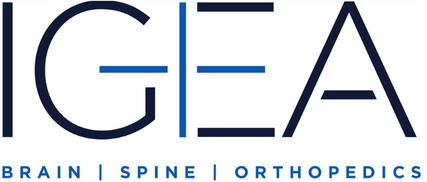ELECTROMYOGRAPHY IN NEW JERSEY & NEW YORK
If you’ve never heard of electromyography before and have it suggested to you as a diagnostic test, it can definitely sound worrying. With “electro” right in the name, you might start getting thoughts akin to Frankenstein about electricity being run through your body. Luckily, the test is anything but terrifying—and, in fact, it is used as a diagnostic tool to help with several conditions. Electromyography is also a test that is done with very little chance of after-effects though, as with anything, there are risks involved and things to watch out for after undergoing the test.
Curious about what electromyography really is, what to expect during and after the test, and what it can be used to diagnose? Then read on and learn more!
What Is Electromyography?
Electromyography (also known as EMG) is a medical test used to study the electrical activity of muscles. It is commonly used to diagnose muscle and nerve conditions, such as peripheral neuropathy, stoke, and nerve root compression. The test involves inserting a needle electrode into a muscle to record the electrical signals produced during contraction.
EMG is performed by a
neurologist or a specialist in electromyography. The test is usually done in a clinic or hospital setting and can last anywhere from 30 minutes to an hour, depending on the number of muscles being tested.
Typically, an EMG is an effective tool when determining effects of a
stroke. EMGs can determine the severity of the stroke by taking a photo of the effected area to check for lingering vascular issued cause by the stroke.
What to Expect During an Electromyography Test
Before the test, the patient is asked to relax their muscles, and the skin is cleaned and numbed with a local anesthetic. Once the muscle is numb, the electromyographer will insert a thin needle electrode into the muscle. The electrode will pick up the electrical signals produced by the muscle when it contracts, and the signals are displayed on a computer screen. The electromyographer will then ask the patient to contract the muscle and observe the signals displayed on the screen. The strength and duration of the muscle contraction can also be measured during the test.
What Can an Electromyography Test Diagnose?
An electromyographic test can be used to help diagnose several conditions, including (but not limited to):
- Peripheral neuropathy: A condition in which the nerves outside the brain and spinal cord are damaged, causing weakness, numbness, and tingling in the affected area.
- Myopathy: A condition in which the muscles are damaged or weakened, causing muscle weakness and wasting.
- Nerve root compression: A condition in which a nerve root is compressed, causing pain and weakness in the affected area.
- Carpal tunnel syndrome: A condition in which the median nerve is compressed in the wrist, causing numbness, tingling, and weakness in the hand and fingers.
- Muscle strains: A condition in which a muscle is stretched or torn, causing pain and weakness.
EMG is also used to evaluate patients with muscle weakness or wasting, to determine if the cause is due to nerve or muscle damage. The results of the EMG can help the doctor determine the best course of treatment for the patient, including physical therapy, medications, or surgery.
Are Electromyography Tests Dangerous?
Electromyography is generally considered a safe and effective test, but there are some risks involved. The most common side effect is soreness or pain at the site of the needle insertion, which can last for a few days. Rarely, infection or bleeding can occur at the needle insertion site. If you have an electromyographic test and notice that there is swelling or pus coming from the needle insertion site, be certain to let your doctor know, as you might be suffering from an infection.
In Conclusion
Electromyography is a medical test that uses a needle electrode to record the electrical signals produced by a muscle during contraction. The test is used to diagnose muscle and nerve conditions, such as peripheral neuropathy, myopathy, and nerve root compression, and to evaluate patients with muscle weakness or wasting. Although there are some risks involved, EMG is generally considered a safe and effective test. If you are experiencing muscle weakness or wasting, it is important to consult a doctor who can recommend the appropriate tests and treatments for your condition.
If you’re looking for an experienced, compassionate
team of professionals who are well-versed in using electromyography to help diagnose underlying conditions, look no further than . We will make certain that you get back to your old self again, with no more pain to slow you down. With locations in and more, we’re ready to help those in s. for more information on our services.

